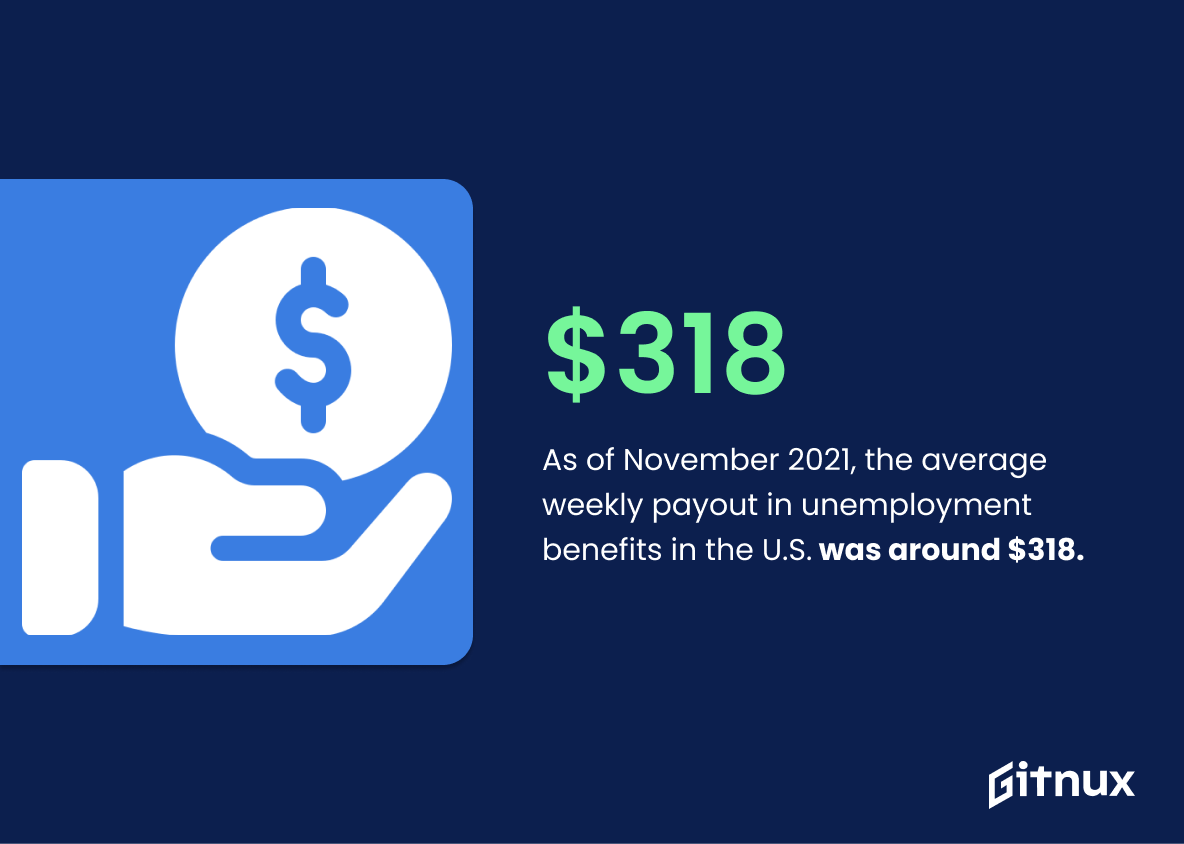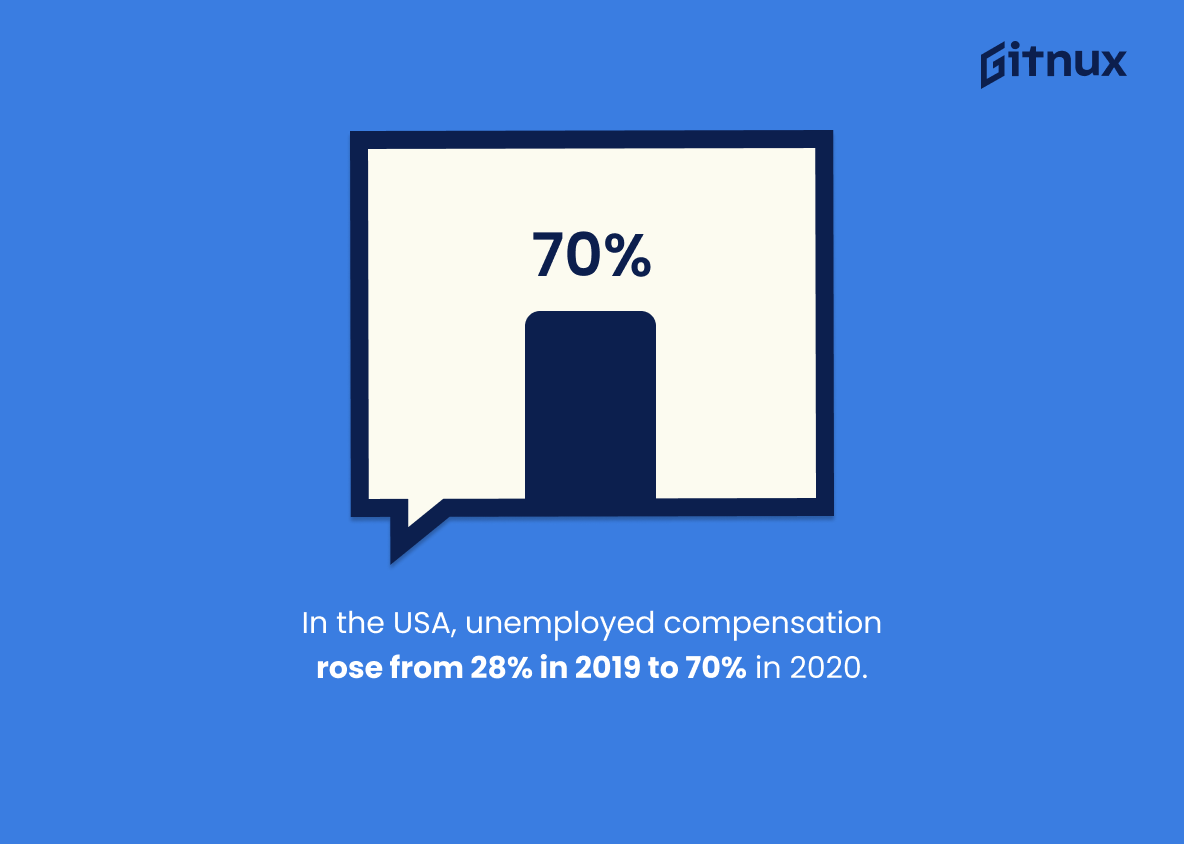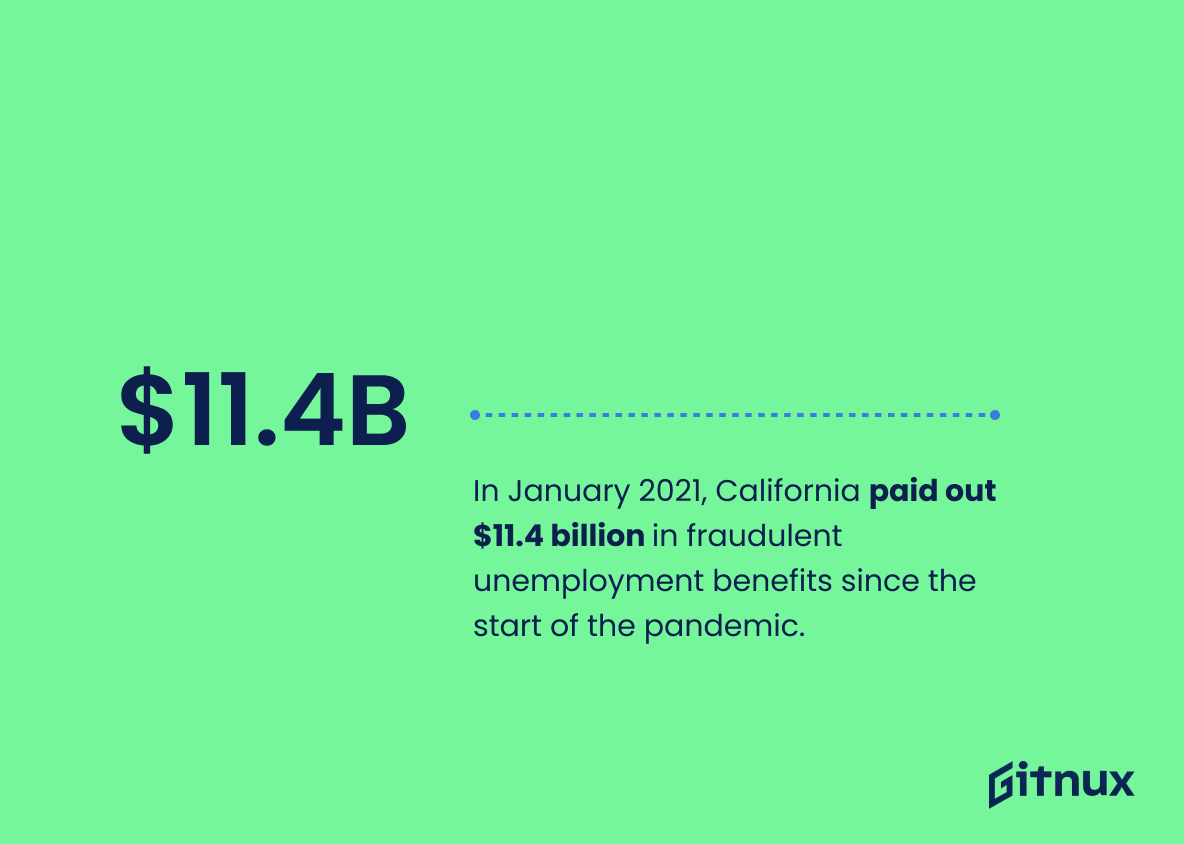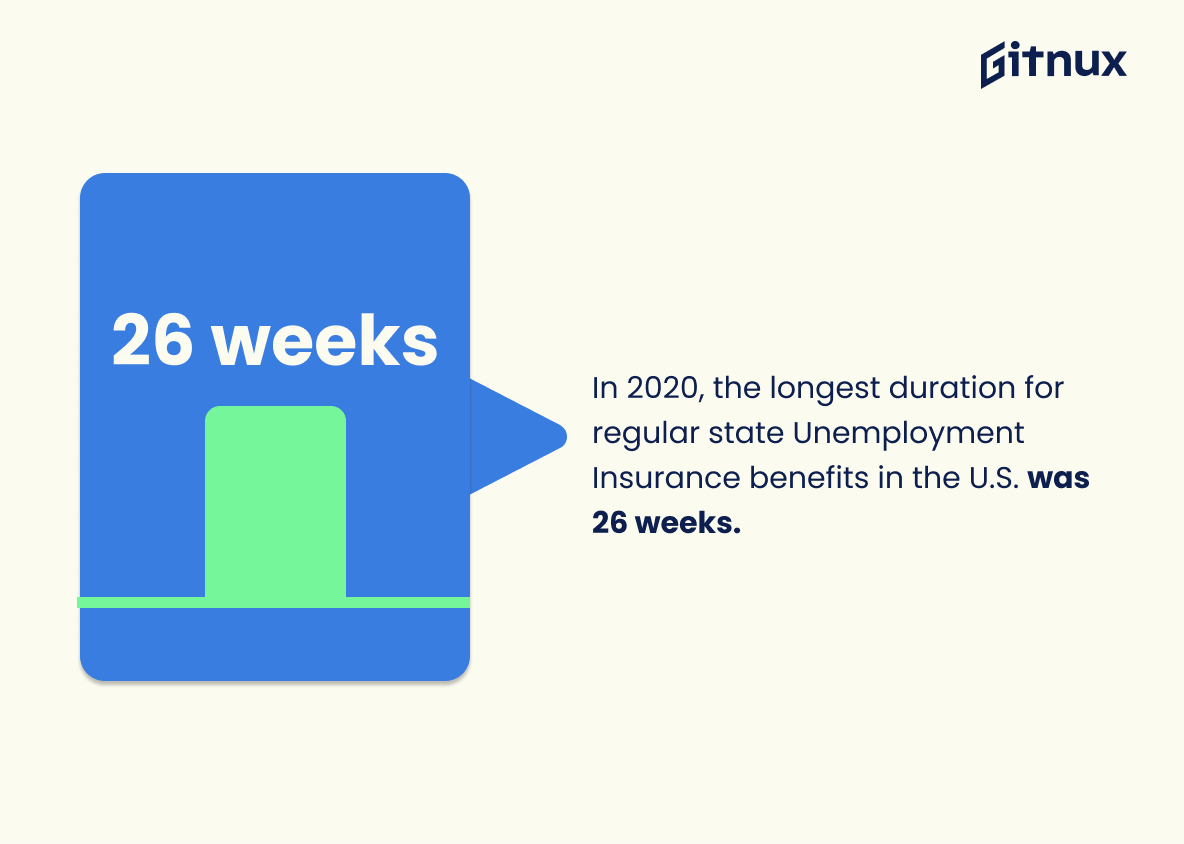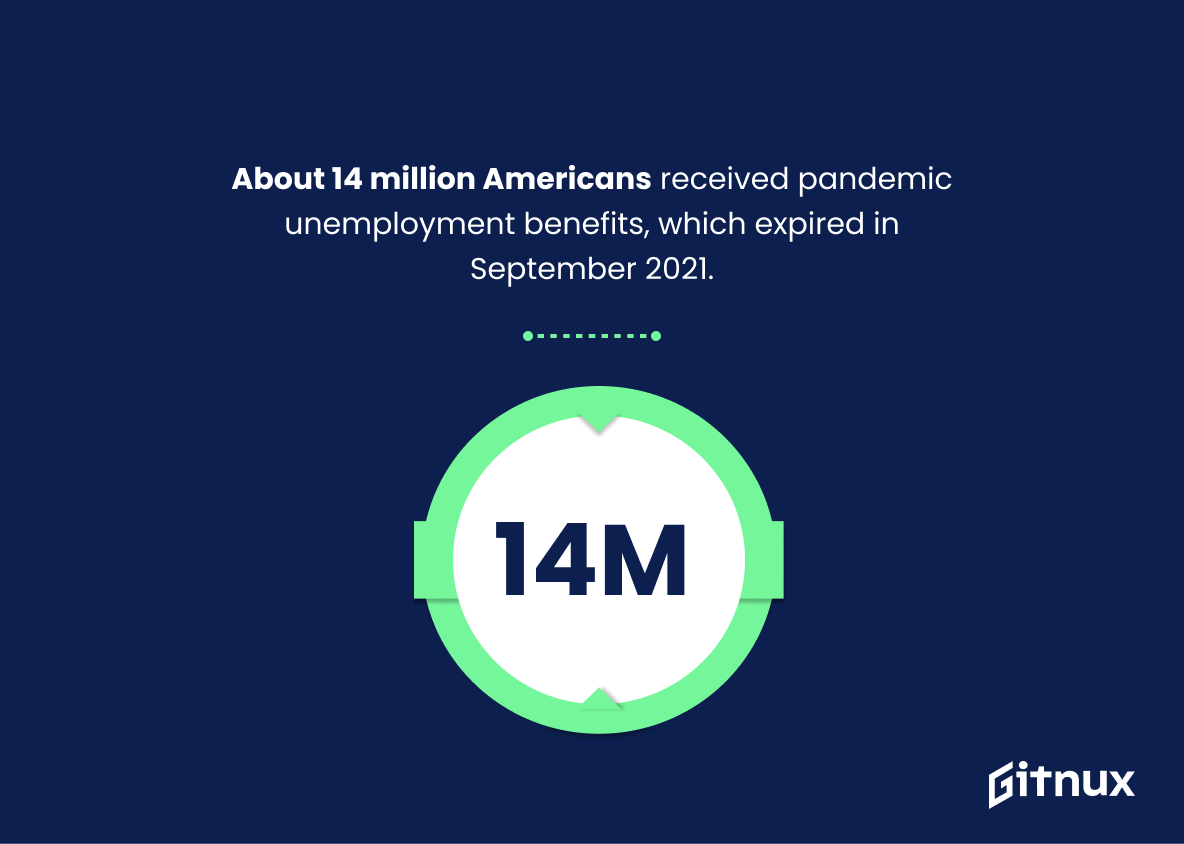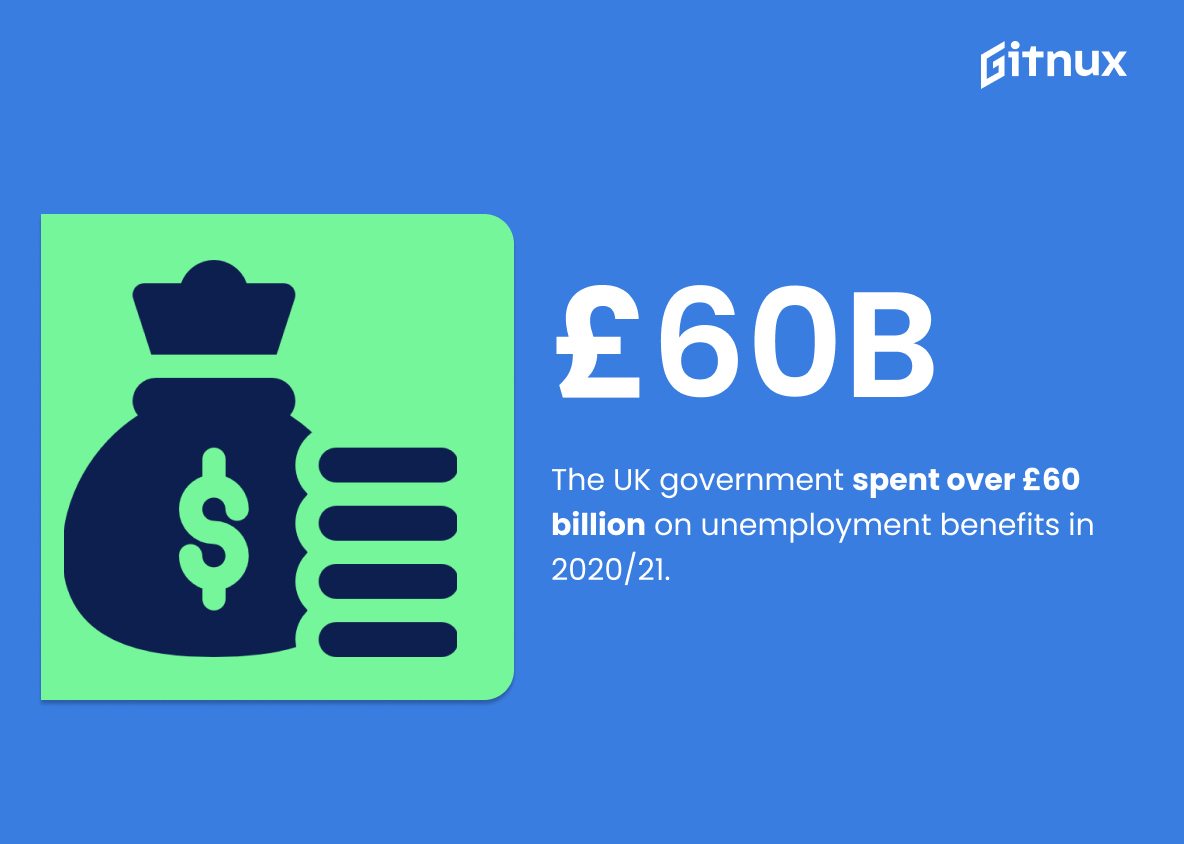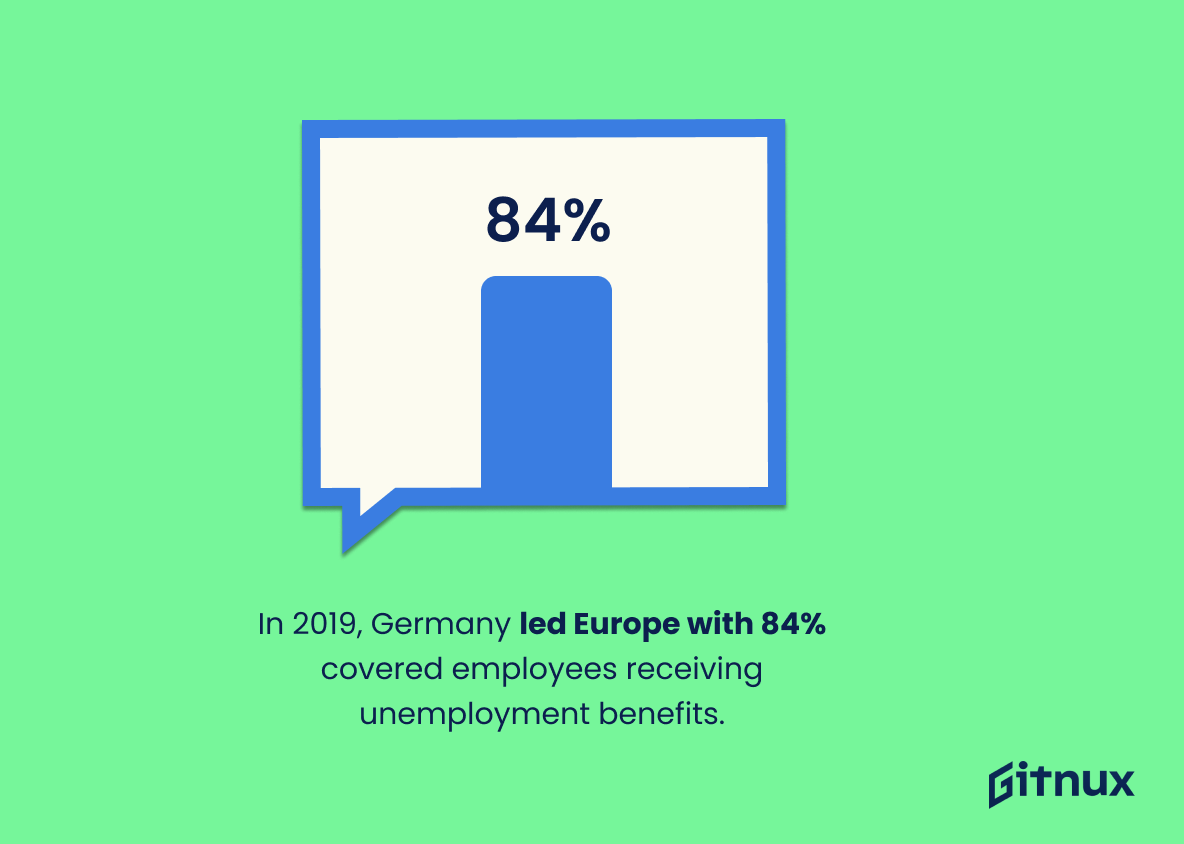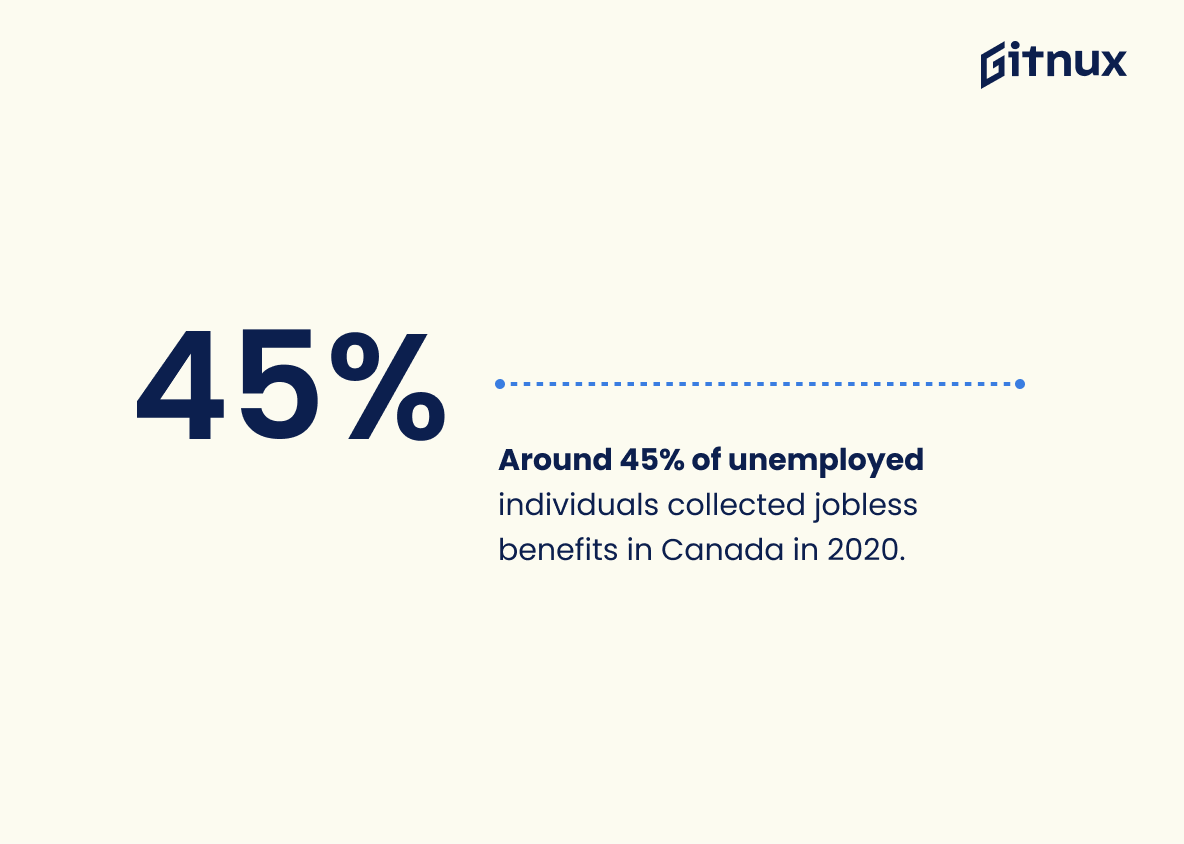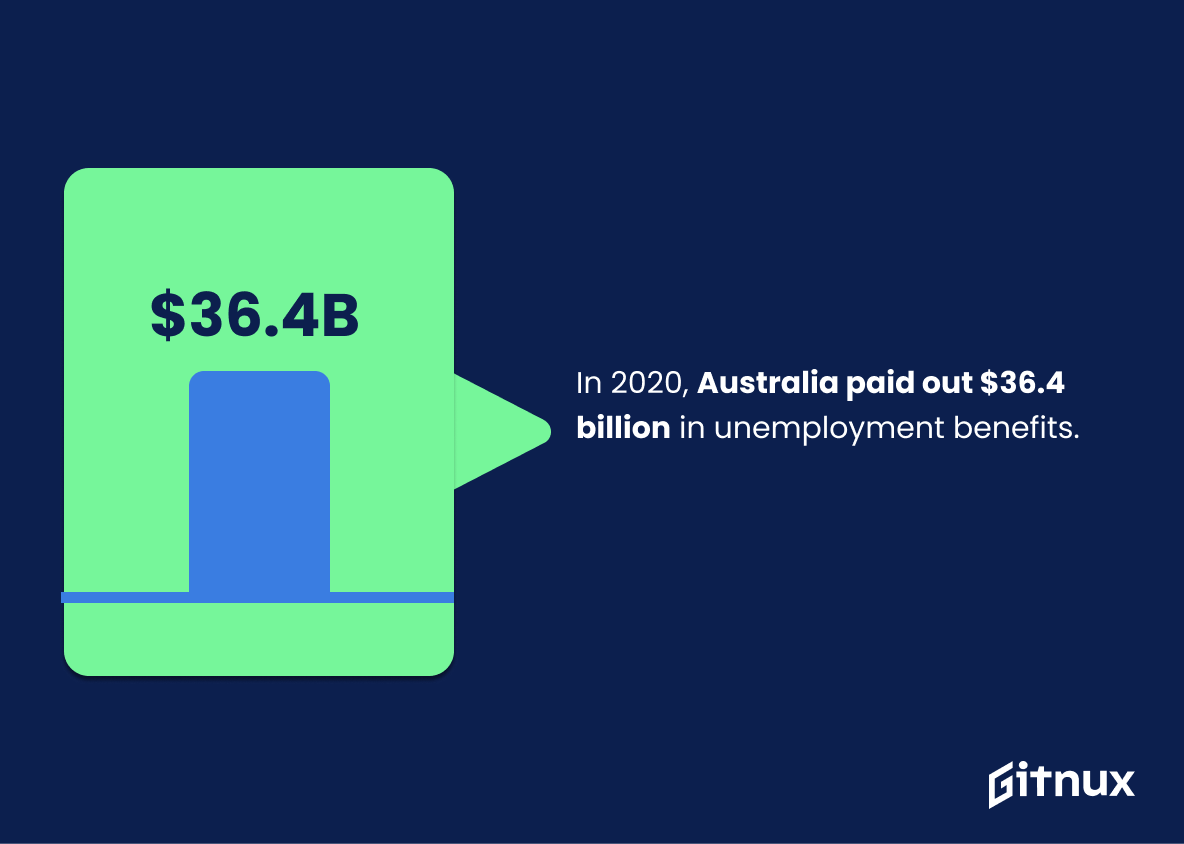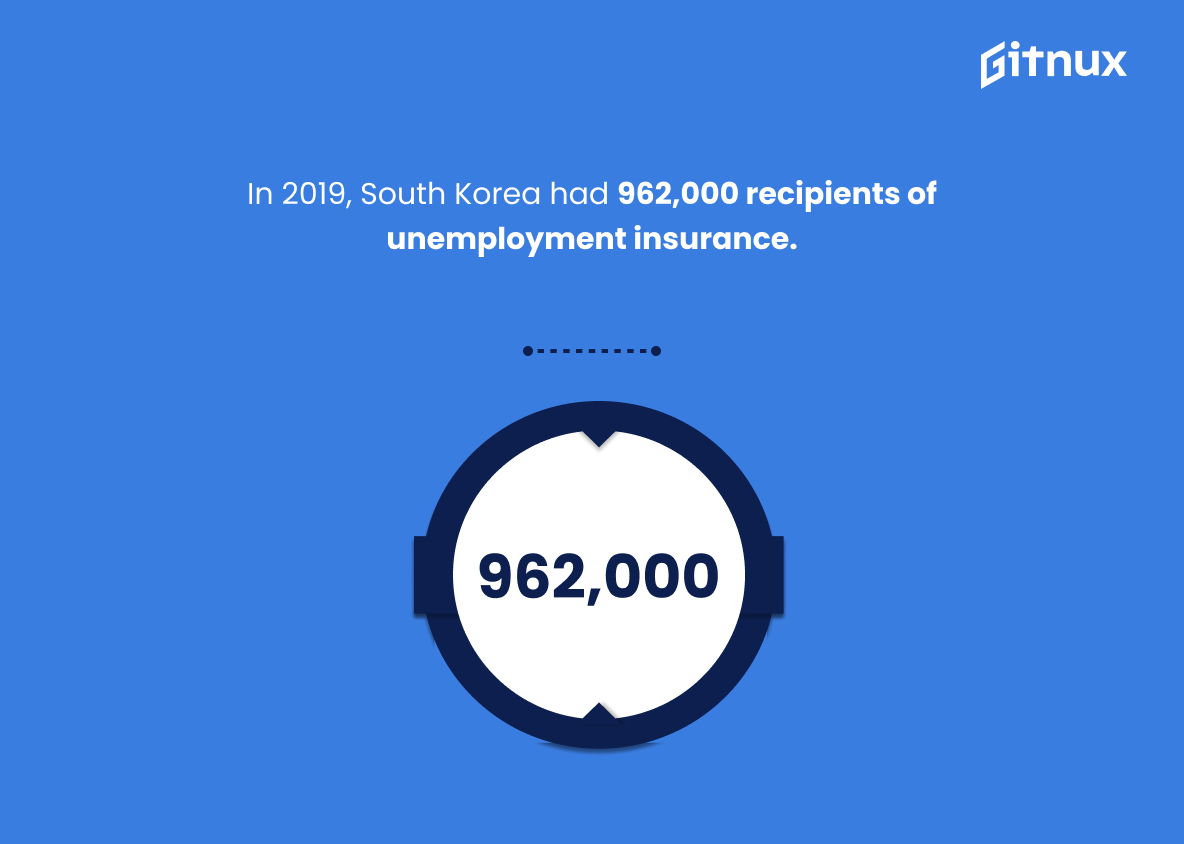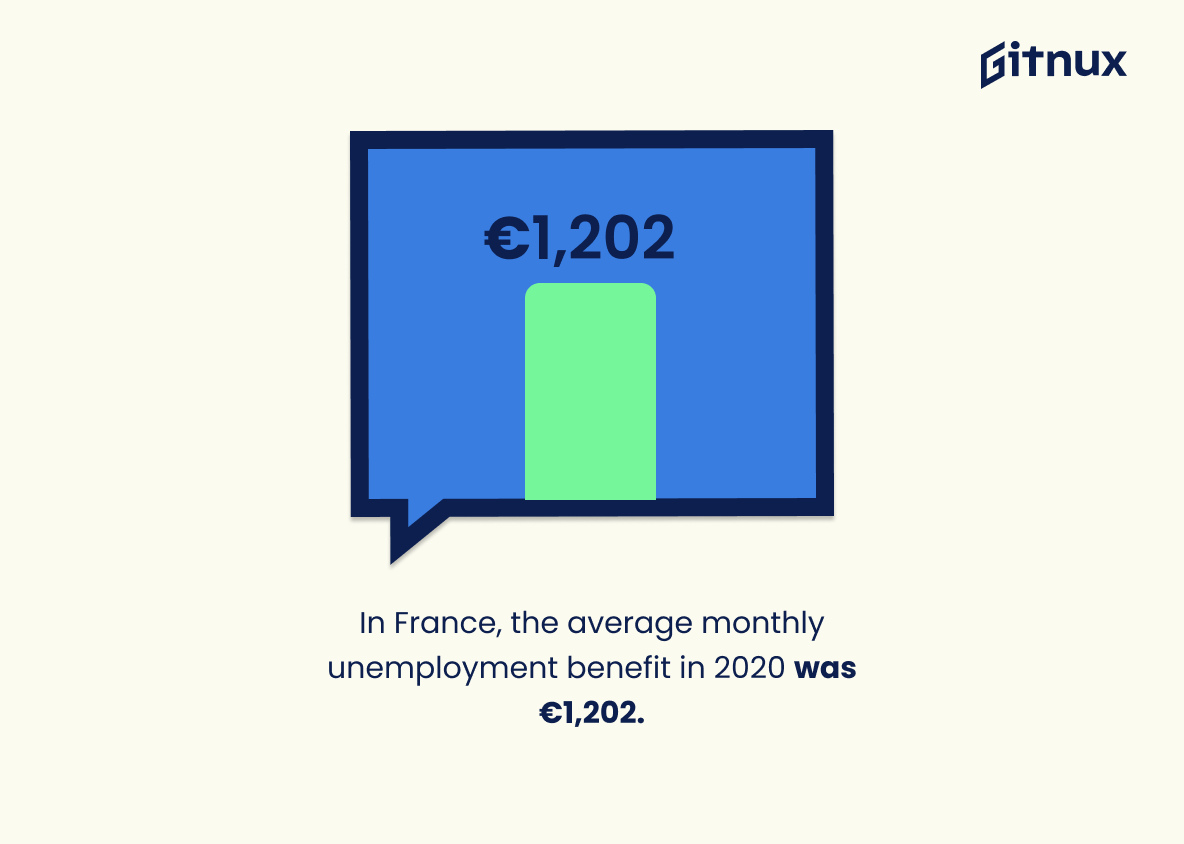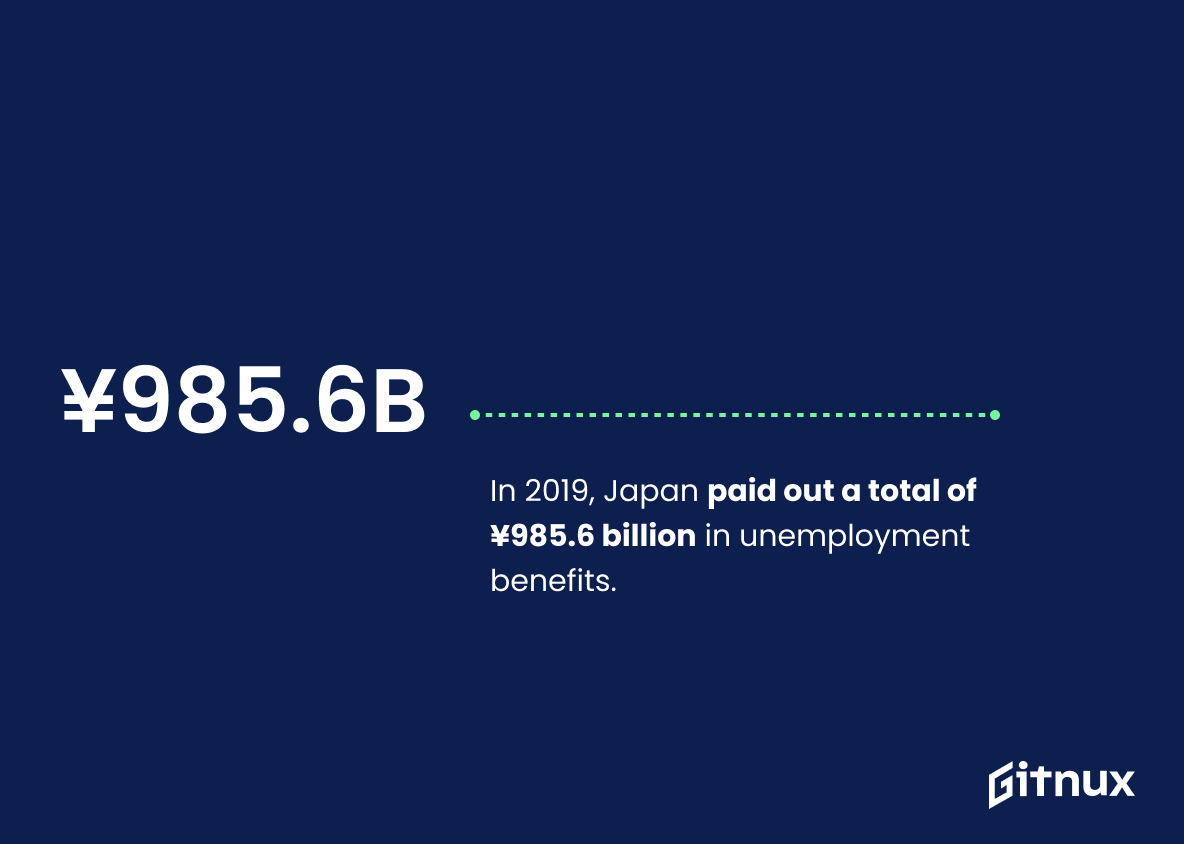Navigating through the complex waters of unemployment can be a daunting task without a clear understanding of the vital statistics on unemployment benefits. These statistics serve as the numerical lens through which we can discern the ebb and flow of the job market and economic health in general. In this blog post, we delve deeply into the realm of unemployment benefits, dissecting the numbers, and interpreting their implications. We’ll offer you a comprehensive walkthrough of the latest unemployment benefits statistics, helping to illuminate the intersecting facets of economic policy, labor market trends, and individual livelihoods. Whether you’re a policy maker, a researcher, or an individual exploring unemployment benefits, this post is your guiding star to navigate the intricate world of unemployment statistics.
The Latest Unemployment Benefits Statistics Unveiled
As of November 2021, the average weekly payout in unemployment benefits in the U.S. was around $318.
Delving into the figure stating that as of November 2021, the average weekly payout in unemployment benefits in the U.S. rested at around $318 can offer a treasure trove of insights for our readers. It serves as a litmus test gauging the level of support the state offers to those finding themselves unemployed. Such a datum builds the backbone of understanding the socioeconomic situation unemployed Americans face.
Additionally, by tracking the shift in this figure, we illuminate the fluctuations in governmental policy or economic health over time. This benchmark, in tandem with other statistics and context, can paint a revealing portrait of economic hardship, relief measures efficacy, and labor market conditions. Essentially, this single number plays a silent yet significant character in our unfolding story of unemployment benefits statistics.
In the USA, the percentage of unemployed workers receiving compensation increased from 28% in 2019 to 70% in 2020.
Examining the dramatic leap from 28% to 70% of unemployed workers receiving compensation in the USA from 2019 to 2020, we unravel an insightful narrative of changing social landscapes within the discourse of unemployment benefits statistics. This phenomenal rise suggests a significant shift in the American workforce’s employment status, unraveled in a time span as short as a year. It may indicate severe job losses caused by an unforeseen crisis, such as the COVID-19 pandemic.
What’s more, this statistic underlines an important growth in the effectiveness and reach of unemployment benefits system during times of increased demand. Simultaneously, it raises questions on how sustainable this payout level is, especially if the high unemployment rate continues. This tale of numbers, thus, becomes an integral subplot in our blog post’s wider narrative about unemployment benefits statistics.
In January 2021, California paid out $11.4 billion in fraudulent unemployment benefits since the start of the pandemic.
Delving into this startling figure of $11.4 billion, which California reported as fraudulent unemployment benefits in January 2021, presents a landscape that is both riveting yet distressing. A blog post dissecting Unemployment Benefits Statistics can hardly overlook this gargantuan figure as it represents a severe breach in financial and data security, reflecting loss on multiple levels since the onset of the pandemic.
This statistic not only conveys a fiscal burden placed on the state, but also has wider implications. It indicates a high level of benefit misappropriation amidst a fierce public health crisis, further straining resources and stretching the gaps within governmental systems. It shows how in turbulent times, systemic fault lines are exposed and exploited. It serves as an imperative call to action for improving unemployment benefit systems in the face of crisis, highlighting the importance of robust checks and balances to protect those truly in need.
Therefore, this figure punctuates a discussion on unemployment benefits with a bold, italicized exclamation, illuminating the precariousness of the current system and urging readers to confront the uncomfortable realities hidden within these billion-dollar figures.
In 2020, the longest duration for regular state Unemployment Insurance benefits in the U.S. was 26 weeks.
Highlighting the statistic that in 2020, the longest duration for regular state Unemployment Insurance benefits in the U.S. was 26 weeks presents a pivotal insight into the limitations of financial safety nets during periods of joblessness. It underscores the temporal window individuals have before benefits expire, pivotal information in the landscape of unemployment scenarios. This can shape the dialogue around necessary reforms in policy and stimulate discussions regarding the fit between unemployment duration and benefits timeline. Furthermore, it offers a precise benchmark when comparing U.S. policies with those of other nations, fostering a global perspective on unemployment support.
About 14 million Americans received pandemic unemployment benefits, which expired in September 2021.
In the grand theatre of Unemployment Benefits Statistics, the spotlight falls firmly on this number: 14 million. This is not a figure to be ignored or glanced over; it represents the myriad of Americans who, amidst a global crisis, sought respite in the form of pandemic unemployment benefits – a respite regrettably fleeting, given these benefits expired in September 2021. This statistic plays a crucial role in unmasking the significant impact of these benefits, the sheer volume of Americans they supported, and the potential implications of their expiration. Therefore, it’s a pivotal part of the story told within a blog post about Unemployment Benefits Statistics.
The UK government spent over £60 billion on unemployment benefits in 2020/21.
Taking a journey through the figures that shape our society, the banner statistic of the UK government shelling out an eye-watering £60 billion on unemployment benefits in 2020/21 forms a pivotal plot point. It has the gravity of a black hole, pulling in readers who comprehend the implications of this colossal expenditure.
In the grand theatre of unemployment benefits statistics, this figure plays the lead role. It paints a dramatic portrait of the UK’s socio-economic climate against the backdrop of a tumultuous year. Signifying a hefty burden on the nation’s finance, it becomes a barometer for the socio-economic fallout due to unforeseen circumstances such as the global pandemic in 2020.
Simultaneously, it serves as a scintillating snapshot of the UK government’s crisis management, hinting at methods for mitigating unemployment’s domino effect on the economy. Therefore, this key statistic forms the cornerstone of understanding, critiquing, and possibly, reimagining the policies related to unemployment benefits.
In 2019, Germany had the highest percentage of covered employees receiving unemployment benefits in Europe at 84%.
Highlighting Germany’s remarkable performance in 2019, with 84% of its covered employees receiving unemployment benefits, garners valuable attention in a discourse on Unemployment Benefits Statistics. It elucidates the German efficiency axiom, unflagging even in the face of adversity. This information illuminates the broad context of unemployment and social policies, hinting at the systemic underpinnings that might lead some countries to fare better in providing support to their unemployed workforce. Furthermore, it prompts a comprehensive evaluation of the unemployment benefits arena through European lenses, igniting pertinent discussions of comparative policies and their efficacy.
Around 45% of unemployed individuals collected jobless benefits in Canada in 2020.
In the vast panorama of Unemployment Benefits Statistics, the figure depicting that ‘Around 45% of unemployed individuals collected jobless benefits in Canada in 2020’ serves as critical landmark. It provides a glimpse into the responsiveness and reach of the country’s social safety nets in dealing with the economic fallouts of 2020. Not only does this number provide the basis for evaluating government policies and their effectiveness, but it also underscores the dire circumstances faced by the remaining 55% who did not receive such assistance. Such insights stress the need for further improvements and modifications in unemployment benefits system in the future.
In 2020, Australia paid out $36.4 billion in unemployment benefits.
Gravity of the 2020 scene unfolds through the imposing figure of $36.4 billion, disbursed by Australia in unemployment benefits. This titanic sum symbolises the repercussions of economic upheavals, swaying the balance in the labor market, revealing the Australian government’s commitment to support those without jobs. It’s a chilling reminder of unemployment issues, making it a centerpiece in any discourse on Unemployment Benefits Statistics.
In 2019, South Korea had 962,000 recipients of unemployment insurance.
Highlighting the figure of 962,000 unemployment insurance recipients in South Korea in 2019 paints a vivid picture of the significance of unemployment benefits. It demonstrates the value of such support systems in a country’s economic anatomy, reinforcing their role not merely as safety nets, but essential lifelines for those grappling with joblessness. Serving as a real-world example, it furnishes readers with a point of reference, facilitating a more nuanced understanding of the interplay between unemployment and social welfare policies. The sheer number underscore the magnitude of the issue, and substantiates the discussions in the blog post. In essence, this statistic transfers the abstract concept of unemployment benefits into a tangible reality as experienced by nearly a million individuals, thereby creating a distinctly more compelling narrative.
In March 2020 in the United States, 6.87 million people claimed unemployment insurance benefits for the first time.
Exploring the vast sea of numbers that is Unemployment Benefits Statistics, this particular statistic speaks volumes. ‘In March 2020, the United States saw an unprecedented 6.87 million people filing for unemployment insurance for the very first time.’ This data point is a thundering assertion of the economic disruption caused by unexpected events, as evident from the sudden jump in unemployment seen during this crisis period. It showcases the critical role played by unemployment insurances as the safety net for American society. The statistic paints a vivid picture of the rapid changes in the job market landscape and underscores the importance of understanding the implications of such sudden surge in demand for unemployment benefits. It becomes a startling emblem that exposes the nation’s vulnerabilities and resilience response to economic hardship at the same time.
In France, the average monthly unemployment benefit in 2020 was €1,202.
Looking at the lens of economic analysis, the aforementioned figure—illuminating an average monthly unemployment benefit of €1,202 in France for 2020—holds a significant bearing in a blog post discussing Unemployment Benefits Statistics. It serves as a pivotal marker, illustrating the level of financial aid those unemployed could depend upon during the challenging times. Furthermore, it provides a tangible comparison point, enabling us to measure France’s social safety net against those of other nations and years, crucial in understanding whether it has been growing significantly stronger or weaker. Altogether, this number adds depth to the overall narrative and offers essential data to the exploration of unemployment aid patterns, elevating the conversation beyond mere words to numerical facts.
In 2019, Japan paid out a total of ¥985.6 billion in unemployment benefits.
Drawing attention to the noteworthy expenditure of ¥985.6 billion in unemployment benefits by Japan in 2019 factors as a pivotal highlight not just for its immense implication. It signifies the economic commitment of the Japanese authorities towards supporting those without job opportunities. This striking figure underlines the significance of the social safety nets in place and serves as a telling narrative of the economic scene in Japan that year. In the realm of unemployment benefits statistics, it stands as a solid benchmark, painting a vivid picture of the strategies governments employ to moderate the social impact of unemployment.
In Spain, the number of people receiving unemployment benefits almost doubled from March to April 2020, reaching 5.2 million.
Diving deeper into the realm of Unemployment Benefits Statistics, one can’t ignore an intriguing unfolding in Spain. The dramatic swell in the number of those benefiting from unemployment aid – nearly doubling from March to April 2020 to a staggering 5.2 million – provides a rich investigative ground. Putting Spain under the lens, the scale of the escalation sends significant shockwaves to comprehend the tangible impact of economic disruptions, often brought about by pandemics or similar global events. It’s a testament to the fragility of job markets and the geopolitical ripple effects that can fuel such drastic changes in unemployment statistics. This Spanish example serves as a powerful illustration, and a needle in the haystack, that grounds us into the reality of unemployment benefits’ crucial role as lifesavers amidst socio-economic turmoil.
Conclusion
Unemployment benefits statistics offer invaluable insights into the state of the job market as well as government’s response to unemployment dynamics. They paint a vivid picture of economic health and offer future predictions regarding unemployment trends. Accurate understanding of these statistics is critical to policymakers, businesses, and individuals alike. As we trudge forward, tackling unemployment and its associated challenges must remain the top priority, and this can only be achieved through comprehensive knowledge of unemployment benefits statistics and thoughtful decision-making.
References
0. – https://www.www.statista.com
1. – https://www.ec.europa.eu
2. – https://www.business.financialpost.com
3. – https://www.www.cnbc.com
4. – https://www.oui.doleta.gov
5. – https://www.obr.uk
6. – https://www.www.bbc.com
7. – https://www.www.latimes.com
8. – https://www.www.barrons.com
9. – https://www.www.jil.go.jp
10. – https://www.www.unedic.org
11. – https://www.treasury.gov.au
12. – https://www.edition.cnn.com
